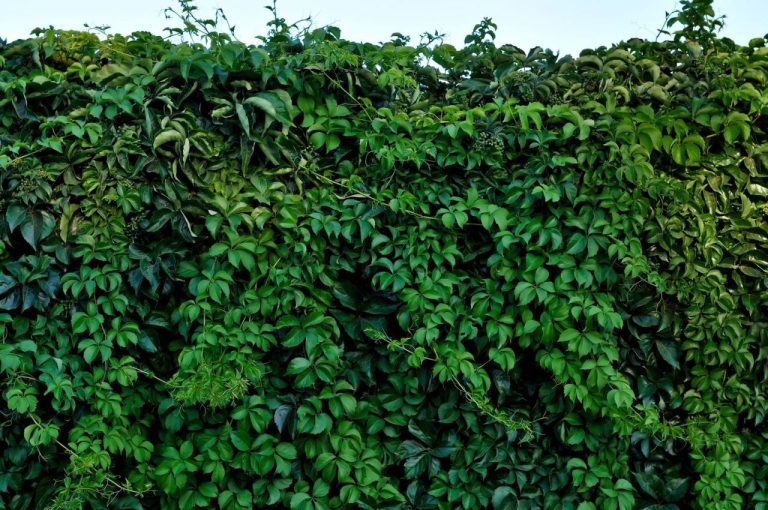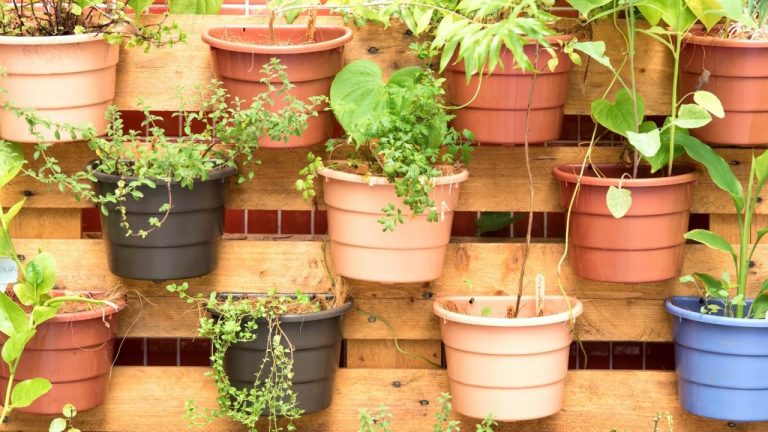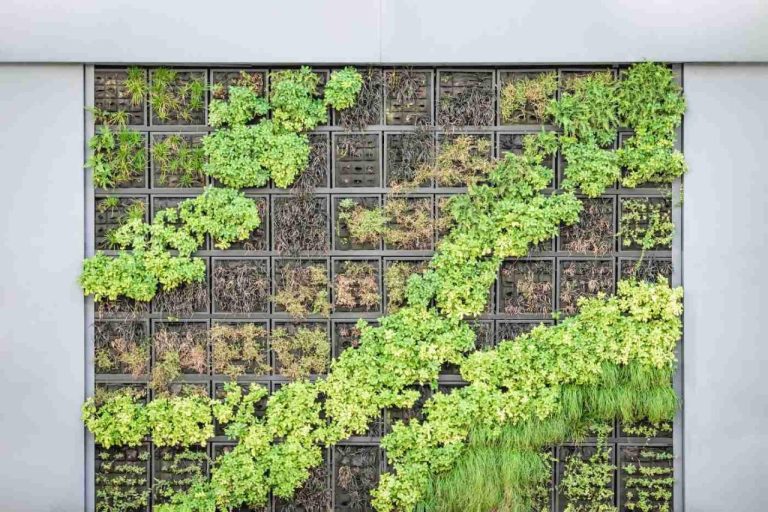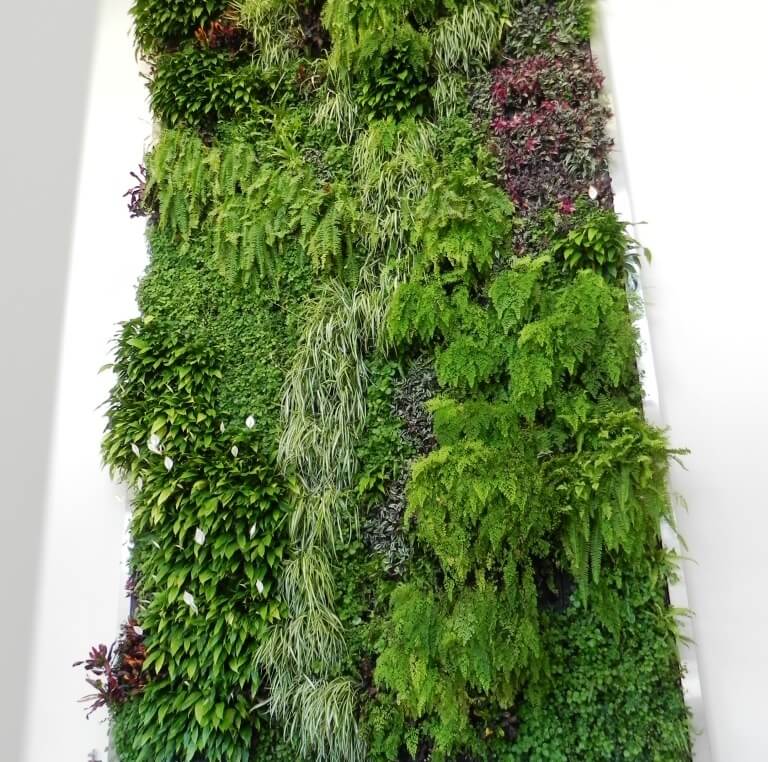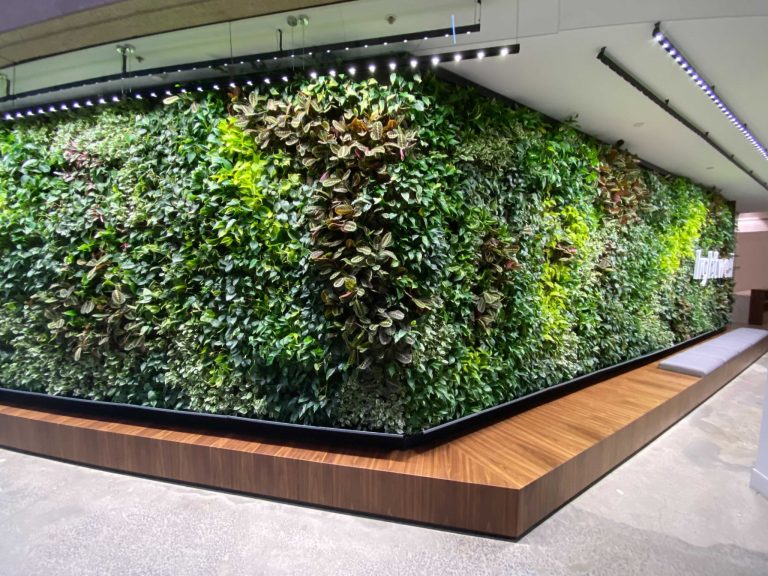Smart Green Walls A Sustainable Solution
Smart green walls offer a compelling approach to urban landscaping and sustainable design. These innovative structures combine the aesthetic appeal of traditional green walls with advanced technologies to create dynamic, responsive environments. They go beyond simply adding greenery; they integrate sensors, actuators, and automation systems to optimize plant health, water usage, and energy efficiency, creating a truly sustainable solution for various applications, from residential buildings to urban parks.
This exploration delves into the intricacies of smart green walls, covering their design, construction, functionality, environmental impact, diverse applications, and future trends. We’ll examine the key components, technologies, and methodologies behind these systems, providing a comprehensive overview that showcases their potential for addressing challenges related to sustainability and urban development.
Defining Smart Green Walls
Smart green walls represent a significant evolution in vertical landscaping, integrating advanced technologies and design principles to enhance both aesthetic appeal and functional benefits. They go beyond traditional green walls by incorporating smart features that optimize plant health, water usage, and energy consumption. This integration of technology creates dynamic and responsive systems, making them ideal for various environments.
Smart green walls are distinguished by their ability to adapt to environmental conditions and optimize plant growth. This adaptability is achieved through the integration of sensors, actuators, and control systems, leading to a more sustainable and efficient approach to vertical gardening. The key components and technologies differentiate smart green walls from their traditional counterparts, enhancing their performance and functionality.
Key Components and Technologies
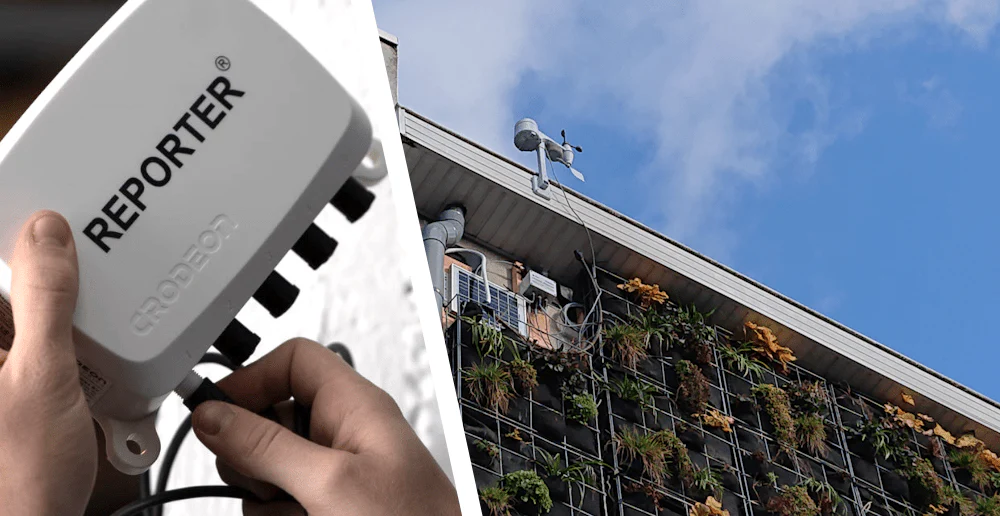
Smart green walls incorporate a range of technologies to optimize plant growth and resource management. These technologies include sensors for monitoring environmental factors such as light, temperature, humidity, and soil moisture. Automated irrigation systems adjust water delivery based on real-time data, reducing water waste and ensuring consistent hydration for the plants. Furthermore, integrated climate control systems maintain optimal conditions for plant growth. These systems often incorporate LED lighting to supplement natural light, providing precise light intensity and spectrum. Control systems and data acquisition components allow for monitoring and management of the entire system, facilitating efficient maintenance and adjustments.
Types of Smart Green Walls and Applications
Smart green walls are categorized by their specific design and application. One type is the data-driven, automated wall. These systems meticulously monitor environmental conditions and adjust irrigation, lighting, and temperature as needed, resulting in optimized plant growth and minimized resource consumption. Another category is the interactive smart wall, which incorporates features like touchscreens or sensors that allow users to interact with the wall, such as adjusting lighting or monitoring plant health. A third type focuses on energy harvesting, using integrated solar panels to power the wall’s functions.
Examples of Smart Green Wall Applications
Smart green walls are increasingly being implemented in various settings. In residential environments, these walls can enhance the aesthetic appeal of homes while providing a natural and eco-friendly touch. Commercial buildings can use them to improve employee well-being and enhance brand image. In urban spaces, smart green walls can contribute to improving air quality and reducing the urban heat island effect. For instance, a hotel might incorporate a smart green wall into its lobby, creating a visually stunning and sustainable space. Similarly, an office building could use it to create a calming and productive environment.
Comparison of Smart and Traditional Green Walls
| Feature | Traditional Green Wall | Smart Green Wall |
|---|---|---|
| Water Management | Manual watering, potentially inefficient | Automated irrigation based on real-time data, minimizing water waste |
| Energy Efficiency | Relies solely on natural light | Integrated LED lighting and climate control for optimal plant growth, potentially reducing energy consumption |
| Maintenance | Regular manual checks and adjustments | Automated monitoring and adjustments, reduced maintenance frequency |
| Cost | Lower initial cost, but higher long-term cost due to frequent maintenance | Higher initial cost, but potentially lower long-term cost due to reduced maintenance and optimized resource use |
Design and Construction
Smart green walls, offering a symbiotic blend of aesthetics and sustainability, require meticulous design and construction. Proper planning ensures these living structures not only enhance the environment but also function effectively for years to come. Their adaptability allows integration into diverse architectural styles, while the selection of appropriate plants and materials guarantees resilience and longevity.
The design process for a smart green wall is iterative, beginning with a comprehensive analysis of the intended location and its specific environmental conditions. This includes considering factors such as sunlight exposure, wind patterns, water availability, and local climate variations. This foundational understanding allows for the optimal selection of plants, materials, and functionalities.
Conceptual Framework for a Smart Green Wall System
A smart green wall system encompasses more than just plants and soil. It’s a complex interplay of interconnected components, each contributing to the overall functionality and sustainability of the wall. This system integrates various functionalities, from automated irrigation and climate control to data collection and monitoring systems. A core component is a sophisticated irrigation system, precisely delivering water to the plants based on real-time environmental conditions and plant needs. Further, sensors and data acquisition devices provide insights into the wall’s performance, enabling adjustments for optimal growth and minimizing resource waste.
Step-by-Step Construction Procedure
The construction process for a smart green wall necessitates careful planning and execution. Each stage plays a critical role in the wall’s overall performance and longevity.
- Site Preparation: Thorough site evaluation is paramount. This includes assessing soil composition, drainage, and structural support. Proper preparation ensures the wall’s stability and long-term performance.
- Structural Framework: The structural frame, which supports the entire system, should be designed with considerations for weight distribution, durability, and potential future expansion. This framework must accommodate the weight of the plants, soil, and irrigation system.
- Substrate Installation: The choice of substrate significantly impacts plant health and growth. A well-drained, nutrient-rich substrate supports healthy root development and reduces waterlogging. Proper substrate depth and composition are crucial for the longevity of the plants.
- Plant Selection: Carefully select plant species based on their specific needs, local climate, and aesthetic goals. The choice of plant species should be tailored to the local microclimate and architectural style. This step requires thorough research into plant compatibility and local environmental factors.
- System Integration: The integration of automated irrigation, sensors, and monitoring systems is crucial. These systems need to be compatible with each other and seamlessly integrated into the wall’s design.
Materials and Technologies
The materials and technologies employed in constructing smart green walls emphasize sustainability and resilience. This involves the use of recycled or reclaimed materials for the structural components and the selection of sustainable plant species. The irrigation systems should use water-efficient technologies, minimizing water usage.
- Sustainable Materials: Recycled metal, reclaimed wood, or composite materials can be incorporated into the structural framework to reduce environmental impact. Use of locally sourced materials reduces transportation costs and carbon footprint.
- Efficient Irrigation Systems: Drip irrigation or other precise watering systems minimize water waste. Smart sensors and controllers adjust watering schedules based on real-time conditions.
- Data Acquisition Technologies: Sensors for monitoring soil moisture, light levels, and temperature enable automated adjustments to optimize plant growth and water usage.
Design Approaches for Different Architectural Styles
Smart green walls can be integrated seamlessly into diverse architectural styles. The design approach must consider the overall aesthetic of the building while optimizing the wall’s functionality. For example, a minimalist design might incorporate a sleek, modern framework, while a historical structure could integrate a more traditional, interwoven design.
- Modern Architecture: Sleek, clean lines and minimalist design elements can be used to create a modern aesthetic.
- Traditional Architecture: More intricate designs can be incorporated into the framework to complement traditional architectural styles.
- Contemporary Designs: Vertical gardens can be integrated into contemporary buildings to provide aesthetic appeal and environmental benefits.
Plant Species for Smart Green Walls
A suitable plant selection for smart green walls requires careful consideration of specific plant needs. This table lists various plant species suitable for these systems, considering factors like light requirements, water needs, and growth habits.
| Plant Species | Light Requirements | Water Needs | Growth Habit |
|---|---|---|---|
| Ivy | Partial Shade | Moderate | Climbing |
| Pothos | Low to Medium Light | Moderate | Vining |
| Spider Plant | Low to Medium Light | Low | Trailing |
| Ferns | Low Light | High | Bushy |
Functionality and Features
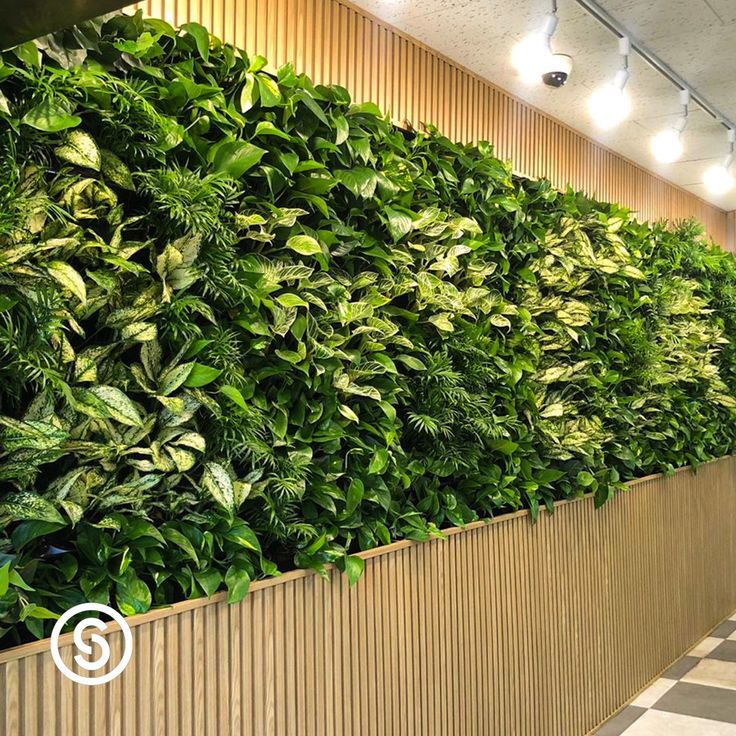
Source: pinimg.com
Smart green walls, beyond their aesthetic appeal, offer a multitude of functionalities, adapting to environmental conditions and optimizing plant health. These dynamic systems leverage advanced technologies to maintain a healthy microclimate, ensuring vibrant greenery and efficient resource management. The sophisticated designs and implementation strategies allow for enhanced sustainability and reduced operational costs.
Adaptive Environmental Control, Smart green wall
Smart green walls dynamically adjust to varying environmental factors. This adaptability is crucial for maintaining optimal plant growth and health. The key to this adaptability lies in precise monitoring and automated responses to changes in temperature, humidity, light intensity, and water availability. This sophisticated approach surpasses the limitations of traditional green walls, which are often static in their environmental management.
Sensor and Actuator Integration
Sensors play a pivotal role in the dynamic response of smart green walls. These sensors continuously monitor key environmental parameters, providing real-time data. Actuators, the active components of the system, receive this data and trigger automated responses. Examples of sensors include temperature and humidity sensors, light sensors, and soil moisture sensors. Actuators, conversely, can be automated irrigation systems, fans, or adjustable shading devices.
Monitoring and Control Methods
Various methods exist for monitoring and controlling the environment within a smart green wall system. One common approach utilizes a central control system that receives data from multiple sensors and adjusts actuators accordingly. Another method involves employing a network of interconnected sensors and actuators, allowing for localized responses to microclimatic variations. This distributed approach is particularly beneficial in larger or more complex smart green wall installations. Advanced data analytics can also be incorporated, allowing the system to learn and predict future needs, further enhancing its adaptability.
Automation Systems for Plant Health
Maintaining optimal plant health is central to the functionality of smart green walls. Automation systems play a crucial role in this process, automating essential tasks like irrigation, fertilization, and pest control. These systems can be programmed to deliver water and nutrients precisely when needed, reducing waste and maximizing plant uptake. Advanced sensors detect pest infestations, triggering automated pest control measures to maintain plant health. This proactive approach significantly reduces manual intervention and ensures consistent plant health.
Features Impact Table
| Feature | Aesthetic Impact | Environmental Impact | Economic Impact |
|---|---|---|---|
| Dynamic Lighting Adjustment | Enhanced visual appeal, adjustable mood | Reduced energy consumption, improved light utilization | Lower electricity bills, reduced environmental footprint |
| Automated Irrigation System | Consistent plant hydration | Reduced water consumption, optimized water usage | Lower water bills, reduced water waste |
| Pest Control System | Healthy, vibrant plant appearance | Reduced pesticide use, improved air quality | Lower maintenance costs, reduced risk of plant disease |
| Temperature and Humidity Control | Consistent plant microclimate | Reduced energy consumption for environmental control | Lower operational costs, improved plant health |
| Data Logging and Analytics | Improved monitoring and visualization of plant health | Data-driven insights into resource usage | Predictive maintenance, improved efficiency, and optimized resource allocation |
Environmental Impact
Smart green walls offer a compelling approach to mitigating the negative environmental impacts of urbanization. Their multifaceted benefits extend from reducing the urban heat island effect to improving air quality and fostering biodiversity. By integrating living systems into urban landscapes, smart green walls contribute to a more sustainable and resilient environment.
Urban Heat Island Effect Reduction
Smart green walls effectively mitigate the urban heat island effect. Vegetation cover intercepts solar radiation, reducing the amount of heat absorbed by building surfaces. This cooling effect creates a more comfortable microclimate in urban areas, leading to lower energy consumption for air conditioning and improved thermal comfort for residents. For instance, studies in various cities have shown that green walls can reduce surface temperatures by several degrees Celsius, demonstrating their tangible impact on urban heat stress.
Air Quality Improvement and Climate Change Mitigation
Smart green walls play a crucial role in improving air quality and mitigating climate change. Plant life filters pollutants from the air, absorbing particulate matter and other harmful substances. This air purification process contributes to healthier urban environments and reduces the health risks associated with air pollution. Furthermore, the sequestration of carbon dioxide by plants helps to reduce greenhouse gas concentrations in the atmosphere, a key aspect of climate change mitigation. The accumulated biomass in green walls effectively contributes to carbon sequestration, playing a significant role in carbon cycling.
Biodiversity Enhancement and Ecosystem Support
Smart green walls can support biodiversity and enhance local ecosystems. The vertical green spaces provide habitat and food sources for various species of insects, birds, and other wildlife. These walls can create interconnected habitats, supporting the ecological balance of urban environments. By incorporating diverse plant species, the walls can provide a more complex and richer environment, fostering a more robust local ecosystem. Examples of successful biodiversity enhancement in similar projects are well-documented, demonstrating the potential of smart green walls in this area.
Energy Efficiency and Water Conservation
Smart green walls contribute to energy efficiency and water conservation. By reducing urban heat island effects, the need for air conditioning is lessened, resulting in lower energy consumption. Furthermore, the walls can help manage rainwater runoff and potentially reduce the strain on water resources. Innovative irrigation systems integrated into smart green walls optimize water usage, further contributing to water conservation efforts. For instance, smart irrigation systems that adjust water delivery based on real-time weather conditions can significantly improve water efficiency.
Comparison of Environmental Impacts
| Environmental Impact Factor | Smart Green Walls | Other Green Infrastructure Solutions (e.g., Rooftops, Street Trees) |
|---|---|---|
| Urban Heat Island Effect Reduction | High – Extensive coverage, vertical integration | Moderate – Limited surface area coverage, varying effectiveness |
| Air Quality Improvement | High – High surface area for pollutant absorption | Moderate – Depends on density and type of vegetation |
| Carbon Sequestration | Moderate – Biomass accumulation | Moderate to High – Depends on the type and size of the vegetation |
| Biodiversity Support | Moderate – Provides habitat and food sources | Moderate – Provides habitat and food sources, varying effectiveness |
| Water Conservation | Highly optimized irrigation systems | Moderate – Potential for reduced water consumption |
Smart green walls demonstrate significant potential for mitigating urban environmental challenges, showcasing a promising approach to building more sustainable cities. The table above highlights the relative effectiveness of smart green walls compared to other green infrastructure solutions.
Applications and Case Studies
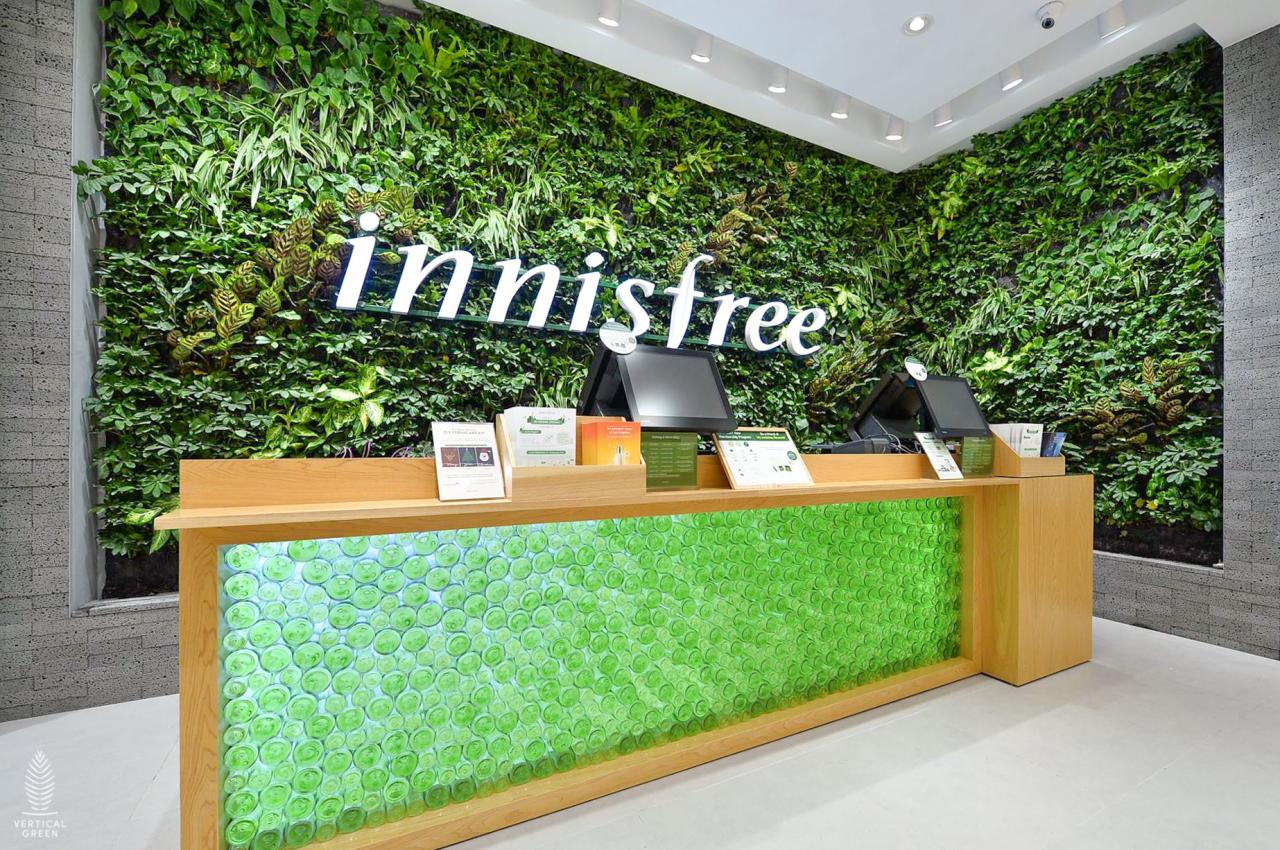
Source: com.. my
Smart green walls are no longer a niche concept but are finding diverse applications across various industries, from enhancing urban aesthetics to optimizing agricultural production. Their adaptability to different environments and the potential for multifaceted benefits make them a valuable tool for sustainable development.
Diverse Applications Across Industries
Smart green walls offer versatile solutions for diverse environments. Their applications extend beyond building facades to include vertical farms, urban parks, and even industrial settings. These innovative systems provide a dynamic platform for environmental improvement and aesthetic enhancement.
- Building Facades: Smart green walls integrated into building facades offer significant advantages. They effectively reduce the urban heat island effect by providing shading and insulation. Improved air quality and thermal comfort are also realized, contributing to energy efficiency and occupant well-being.
- Vertical Farms: The controlled environment offered by smart green walls facilitates vertical farming, optimizing space utilization for agriculture. This innovative approach enables the production of fresh produce in urban areas, reducing transportation costs and enhancing food security. Controlled lighting and irrigation systems within the smart wall structures further optimize crop yields.
- Urban Parks and Public Spaces: Smart green walls can transform urban parks and public spaces. These systems enhance biodiversity, provide shade and cooling, and improve the overall aesthetic appeal. They also foster community engagement by providing interactive and educational opportunities.
- Industrial Areas: Smart green walls can be implemented in industrial settings to mitigate noise pollution, reduce the urban heat island effect, and improve the aesthetics of the area. They can also enhance employee well-being by creating a more pleasant and productive work environment.
Specific Use Cases in Different Environments
Smart green walls demonstrate remarkable adaptability to different environments, providing tailored solutions to specific needs. Their design and functionality can be customized to suit high-rise buildings, rooftops, and industrial areas.
- High-Rise Buildings: Smart green walls on high-rise buildings can mitigate the urban heat island effect, improving the thermal comfort of surrounding areas. The vertical greenery reduces the building’s energy consumption by providing insulation and shading. This leads to significant cost savings for the building’s occupants and promotes sustainable urban design.
- Rooftops: Smart green walls installed on rooftops can significantly reduce stormwater runoff. The walls act as a natural filter and absorber, improving water quality and reducing strain on urban drainage systems. They also create a more aesthetically pleasing rooftop environment.
- Industrial Areas: Smart green walls in industrial areas can reduce noise pollution and improve air quality. The walls act as a sound barrier, mitigating noise levels and absorbing pollutants from the air, creating a healthier and more productive work environment. They also contribute to the overall aesthetics and environmental sustainability of the industrial space.
Case Study Comparison
The table below compares various case studies, highlighting key learnings and innovations in smart green wall implementations.
| Case Study | Location | Application | Key Learnings | Innovations |
|---|---|---|---|---|
| Green Oasis Building | New York City | Building Facade | Significant reduction in energy consumption and improved occupant comfort | Integration of rainwater harvesting and smart irrigation systems |
| Vertical Farm Project | Chicago | Vertical Farming | Increased crop yield and reduced reliance on traditional farming methods | Automated nutrient delivery and lighting control systems |
| Urban Park Revitalization | London | Urban Park | Enhanced biodiversity and improved air quality in the park | Integration of interactive educational elements |
| Industrial Eco-Park | Houston | Industrial Area | Reduced noise pollution and improved aesthetics | Acoustic barrier properties of the smart wall components |
Real-World Scenario and Results
The “Green Spine” project in San Francisco exemplifies the application of smart green walls. This project integrated a series of interconnected smart green walls along a city street. The result was a significant reduction in the urban heat island effect, a noticeable improvement in air quality, and a boost in local biodiversity. Furthermore, the project sparked public interest in sustainable urban design, demonstrating the tangible benefits of smart green wall implementation.
Future Trends and Innovations: Smart Green Wall
Smart green walls are poised for significant advancements, driven by the increasing demand for sustainable urban environments and innovative technologies. This evolution promises to further enhance their aesthetic appeal, functional capabilities, and environmental benefits. The integration of smart systems is expected to optimize water usage, energy efficiency, and overall performance.
Emerging technologies and research are exploring new ways to create more robust, adaptable, and responsive green wall systems. This includes advancements in materials, plant selection, and control systems, which will likely shape the future of vertical greenery.
Emerging Materials and Construction Techniques
Innovative materials are being developed to improve the structural integrity and durability of smart green walls. Lightweight, yet robust composite materials are gaining traction, offering better support for larger plant structures. Self-healing polymers and materials with enhanced UV resistance are being incorporated to prolong the life cycle of the wall and reduce maintenance needs. These improvements will facilitate more complex and aesthetically pleasing designs. Moreover, the use of 3D printing techniques is promising for creating customized and intricate wall structures tailored to specific plant needs.
Enhanced Plant Selection and Growth Optimization
Future smart green walls will likely leverage genetic engineering and advanced plant breeding to develop plant varieties specifically suited for vertical environments. These plants will be more resilient to environmental stressors, require less water, and demonstrate enhanced aesthetic appeal. Furthermore, intelligent irrigation systems will dynamically adjust water delivery based on real-time plant needs, maximizing water efficiency. Integrated sensors will monitor plant health, enabling early detection of issues and prompt interventions to ensure optimal growth.
Advanced Control Systems and Automation
Smart green walls will become increasingly automated, with sophisticated control systems that manage water, light, and nutrient delivery. These systems will be responsive to environmental changes, ensuring optimal conditions for plant growth. Data analytics will be employed to analyze collected information from sensors, leading to predictive models that anticipate plant needs and optimize resource allocation. This approach promises significant improvements in the efficiency and sustainability of smart green wall operations.
Integration with Building Management Systems (BMS)
The integration of smart green walls with building management systems (BMS) is crucial for maximizing their performance and efficiency. BMS integration allows for automated control of environmental parameters and seamless integration into building operations. Real-time data exchange between the green wall system and the BMS enables adaptive responses to fluctuating conditions, ensuring consistent plant health and environmental performance. This integration will contribute to energy savings and enhanced building sustainability.
Potential Limitations and Challenges
While the future of smart green walls is promising, challenges remain. High initial investment costs may limit accessibility for some applications. Ensuring long-term plant health and resilience in diverse climates requires ongoing research and development. The development of standardized protocols and guidelines for installation and maintenance is crucial for widespread adoption. Furthermore, the impact of smart green wall systems on local ecosystems needs to be considered and carefully evaluated.
Key Factors Driving Future Development
| Factor | Description |
|---|---|
| Growing Environmental Concerns | Increased awareness of climate change and the need for sustainable solutions drives innovation in green infrastructure. |
| Technological Advancements | Rapid progress in sensors, automation, and data analytics fuels the development of more intelligent systems. |
| Demand for Urban Greenery | The increasing need for aesthetically pleasing and functional green spaces in urban environments fosters research and development. |
| Economic Incentives and Policies | Government support and financial incentives for sustainable technologies encourage investment in smart green walls. |
| Research and Collaboration | Continued research and collaboration between scientists, engineers, and architects are critical for driving innovation. |
Outcome Summary
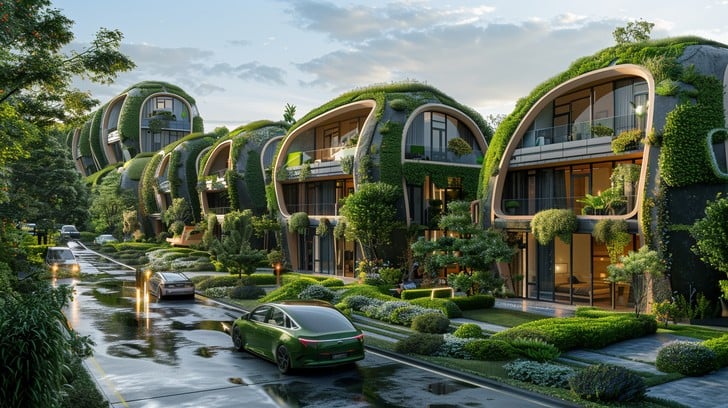
In conclusion, smart green walls represent a significant advancement in green infrastructure. Their ability to adapt to changing environmental conditions, optimize resource use, and contribute to various sustainability goals makes them a compelling solution for a wide range of applications. While challenges remain in terms of cost and widespread adoption, the future of smart green walls appears promising, with ongoing innovations likely to drive further development and implementation in the years ahead. The benefits extend beyond aesthetics to include significant environmental advantages, making them a valuable tool for creating more sustainable and resilient urban environments.
